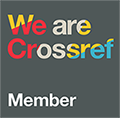Conceptualization of Out-of-School Mathematics Education
DOI:
https://doi.org/10.33308/26674874.2024381644Keywords:
Out-of-School Mathematics Education, Informal Mathematics Education, Out-of-School Learning, Outdoor Mathematics Education, Non-Formal EducationAbstract
Out-of-school mathematics education is a relatively new domain. This paper examines learning environments in out-of-school mathematics education, where teachers play a role. These environments fall into three major categories: (a) real-life settings (working places, outdoor environments, daily life settings like home), (b) designed learning environments (e.g., museums, libraries, zoos), and (c) outside classroom settings in schools (e.g., school gymnasiums, art studios). This study highlights interchangeable use of “non-formal” and “informal” education by researchers and raises concerns regarding potential conflicts between informal education programs that employ formal approaches and the inherent nature of informal mathematics education. As a solution, this paper proposes using La Belle’s matrix (1982) to analyze current out—of-school mathematics education programs and identify their educational approaches. This contribution will broaden the conceptualization of out-of-school mathematics education and guide future research by examining critical issues.
Downloads
References
Akkerman, S. F., & Bakker, A. (2012). Crossing boundaries between school and work during apprenticeships. Vocations and Learning, 5, 153-173. DOI: https://doi.org/10.1007/s12186-011-9073-6
Andreatta, M. (2018). A Mathematician at MUSE, the Science Museum of Trento. In M. Emmer & M. Abate (Eds.), Imagine math 6: Between culture and mathematics (pp.49-56). Springer International Publishing. DOI: https://doi.org/10.1007/978-3-319-93949-0_4
Barry, A. L., & Villeneuve, P. (1998). Veni, vidi, vici: Interdisciplinary learning in the art museum. Art Education, 51(1), 16-24. DOI: https://doi.org/10.2307/3216184
Bennett, B. R. (2020). An exploration of parent-child conversations at a mathematics exhibit [Unpublished doctorate thesis]. The University of Arizona.
Beutelspacher, A. (2012). Lessons which can be learned from the Mathematikum. In E. Behrends, N. Crato, J. Rodrigues (Eds.), Raising public awareness of mathematics (pp.101–108). Springer. DOI: https://doi.org/10.1007/978-3-642-25710-0_9
Beutelspacher, A. (2018). Mathematical experiments - An ideal first step into mathematics. In G. Kaiser, H. Forgasz, M. Graven, A. Kuzniak, E. Simmt, & B. Xu (Eds.), Invited Lectures from the 13th International Congress on Mathematical Education (pp.19–29). Springer. DOI: https://doi.org/10.1007/978-3-319-72170-5_2
Bonotto, C. (2005). How informal out-of-school mathematics can help students make sense of formal in-school mathematics: The case of multiplying by decimal numbers. Mathematical Thinking and Learning, 7(4), 313-344. DOI: https://doi.org/10.1207/s15327833mtl0704_3
Brenner, M. E. (1998). Meaning and money. Educational Studies in Mathematics, 36(2), 123-155. DOI: https://doi.org/10.1023/A:1003176619818
Cahyono, A. N., & Ludwig, M. (2018). Teaching and learning mathematics around the city supported by the use of digital technology. Eurasia Journal of Mathematics, Science and Technology Education, 15(1), em1654. DOI: https://doi.org/10.29333/ejmste/99514
Cooper, S. (2011). An exploration of the potential for mathematical experiences in informal learning environments. Visitor Studies, 14(1), 48–65. DOI: https://doi.org/10.1080/10645578.2011.557628
Dancstep, T., Gutwill, J. P., & Sindorf, L. (2015). Comparing the visitor experience at immersive and tabletop exhibits. Curator: The Museum Journal, 58(4), 401–422. DOI: https://doi.org/10.1111/cura.12137
Dancu, T., Gutwill, J. P., & Hido, N. (2011). Using iterative design and evaluation to develop playful learning experiences. Children, Youth and Environments, 21(2), 338–359. DOI: https://doi.org/10.1353/cye.2011.0019
Duatepe-Paksu, A., Kazak, S., & Çontay, E. G. (2022). Okul dışı ortamlarda gerçekleştirilen matematik etkinliklerinin değerlendirilmesi: “Her Yer Matematik Projesi”. Muğla Sıtkı Koçman Üniversitesi Eğitim Fakültesi Dergisi, 9(2), 541-558. DOI: https://doi.org/10.21666/muefd.1094581
Eshach, H. (2007). Bridging in-school and out-of-school learning: Formal, non-formal, and informal education. Journal of Science Education and Technology, 16, 171-190. DOI: https://doi.org/10.1007/s10956-006-9027-1
Falk, J. H., & Dierking, L. D. (2019). Reimagining public science education: The role of lifelong free-choice learning. Disciplinary and Interdisciplinary Science Education Research, 1, 1-8. DOI: https://doi.org/10.1186/s43031-019-0013-x
Fathauer, R. W. (2007). A survey of recent mathematical art exhibitions. Journal of Mathematics and the Arts, 1(3), 181-190. DOI: https://doi.org/10.1080/17513470701689167
Fägerstam, E., & Samuelsson, J. (2014). Learning arithmetic outdoors in junior high school–influence on performance and self-regulating skills. Education 3-13, 42(4), 419-431. DOI: https://doi.org/10.1080/03004279.2012.713374
Field, J., & Tuckett, A. (2016). Informal learning in the family and community. Foresight, Government Office for Science. https://assets.publishing.service.gov.uk/government/uploads/system/uploads/attachment_data/file/590364/skill-lifelong-learning-in-family-and-community.pdf
Garibay, C., Martin, L., Rubin, A., & Wright, T. (2012). Math in zoos and aquariums: The evolution of a professional development workshop. http://www.informalscience.org/sites/default/files/MiZAreport.pdf
Guberman, S. R., Flexer, R. J., Flexer, A. S., & Topping, C. L. (1999). Project Math‐Muse: Interactive mathematics exhibits for young children. Curator: The Museum Journal, 42(4), 285-298. DOI: https://doi.org/10.1111/j.2151-6952.1999.tb01150.x
Gyllenhaal, E. D. (2006). Memories of math: Visitors’ experiences in an exhibition about calculus. Curator, 49(3), 345–364. DOI: https://doi.org/10.1111/j.2151-6952.2006.tb00228.x
Haas, B., Kreis, Y., & Lavicza, Z. (2021). Integrated STEAM approach in outdoor trails with elementary school pre-service teachers. Educational Technology & Society, 24(4), 205-219.
Henebry, C. (2012). The making of MoMath:America's only museum of mathematics. Math Horizons, 20(2), 14-17. DOI: https://doi.org/10.4169/mathhorizons.20.2.14
Higher Education Council (HEC) (2018). Elementary mathematics education undergraduate program (İlköğretim matematik öğretmenliği lisans programı). https://www.yok.gov.tr/Documents/Kurumsal/egitim_ogretim_dairesi/Yeni-Ogretmen-Yetistirme-Lisans Programlari/Ilkogretim_Matematik_Lisans_Programi.pdf
Hoyles, C., Noss, R., & Pozzi, S. (2001). Proportional reasoning in nursing practice. Journal for Research in Mathematics Education, 32(1), 4-27. DOI: https://doi.org/10.2307/749619
Kayhan-Altay, M., & Yetkin Özdemir, E. (2022). The use of museum resources in mathematics education: a study with preservice middle-school mathematics teachers. Journal of Education for Teaching, 49(4), 616-629. DOI: https://doi.org/10.1080/02607476.2022.2150534
Kelton, M. L. (2015). Math on the move: A video-based study of school field trips to a mathematics exhibition [Unpublished doctorate thesis]. University of California, San Diego and San Diego State University.
Kelton, M. L. (2021). Mathematics learning pathways on a school fieldtrip: Interactional practices linking school and museum activity. Visitor Studies, 24(2), 220–242. DOI: https://doi.org/10.1080/10645578.2021.1939984
Kelton, M. L., & Ma, J. Y. (2018). Reconfiguring mathematical settings and activity through multi-party, whole-body collaboration. Educational Studies in Mathematics, 98, 177-196. DOI: https://doi.org/10.1007/s10649-018-9805-8
Kelton, M. L., & Ma, J. Y. (2020). Assembling a torus: Family mobilities in an immersive mathematics exhibition. Cognition and Instruction, 38(3), 318–347. DOI: https://doi.org/10.1080/07370008.2020.1725013
Kuş, M. (2019). Playing with mathematics in the art studio: Students’ visual-spatial thinking processes in the context of a Studio Thinking-based environment [Unpublished doctorate thesis]. Middle East Technical University.
Kus, M., & Cakiroglu, E. (2022). Mathematics in the informal setting of an art studio: students’ visuospatial thinking processes in a studio thinking-based environment. Educational Studies in Mathematics, 110(3), 545-571. DOI: https://doi.org/10.1007/s10649-022-10142-8
La Belle, T. J. (1982). Formal, nonformal and informal education: A holistic perspective on lifelong learning. International Review of Education, 28, 159-175. DOI: https://doi.org/10.1007/BF00598444
Lawrence, C. (2023). A Decade of MoMath: TENacity, InTENsity, and PoTENtial. The Mathematical Intelligencer, 45, 278-283. DOI: https://doi.org/10.1007/s00283-022-10257-z
Lowrie, T. (2005). Problem solving in technology rich contexts: Mathematics sense making in out-of-school environments. The Journal of Mathematical Behavior, 24(3-4), 275-286. DOI: https://doi.org/10.1016/j.jmathb.2005.09.008
MacDonald, A. (2012). Young children’s photographs of measurement in the home. Early Years, 32(1), 71-85. DOI: https://doi.org/10.1080/09575146.2011.608651
Masingila, J. O. (1993). Learning from mathematics practice in out-of-school situations. For the Learning of Mathematics, 13(2), 18-22.
Masingila, J. O. (1994). Mathematics practice in carpet laying. Anthropology & Education Quarterly, 25(4), 430-462. DOI: https://doi.org/10.1525/aeq.1994.25.4.04x0531k
Moffett, P. V. (2011). Outdoor mathematics trails: an evaluation of one training partnership. Education 3–13, 39(3), 277-287. DOI: https://doi.org/10.1080/03004270903508462
Mokros, J., & Wright, T. (2009). Zoos, aquariums, and expanding students' data literacy. Teaching Children Mathematics, 15(9), 524-530. DOI: https://doi.org/10.5951/TCM.15.9.0524
Moss, M. (2009). Outdoor mathematical experiences: Constructivism, connections, and health. In B. Clarke, B. Grevholm, & R. Millman (Eds.), Tasks in primary mathematics teacher education (Vol. 4), pp.263–273). Springer. DOI: https://doi.org/10.1007/978-0-387-09669-8_17
Mueller, M., & Maher, C. (2009). Learning to reason in an informal math after-school program. Mathematics Education Research Journal, 21(3), 7-35. DOI: https://doi.org/10.1007/BF03217551
National Research Council. (2009). Learning science in informal environments: People, places, and pursuits. National Academies Press. https://nap.nationalacademies.org/read/12190/chapter/1
Nemirovsky, R. (2018). Pedagogies of emergent learning. In G. Kaiser, H. Forgasz, M. Graven, A. Kuzniak, E. Simmt, & B. Xu (Eds.), Invited lectures from the 13th International Congress on Mathematical Education. ICME-13 monographs (pp.401–412). Springer. DOI: https://doi.org/10.1007/978-3-319-72170-5_23
Nemirovsky, R., Kelton, M. L., & Civil, M. (2017). Toward a vibrant and socially significant informal mathematics education. In J. Cai (Ed.), Compendium for research in mathematics education (pp.90–101). National Council of Teachers of Mathematics.
Nemirovsky, R., Kelton, M. L., & Rhodehamel, B. (2013). Playing mathematical instruments: Emerging perceptuomotor integration with an interactive mathematics exhibit. Journal for Research in Mathematics Education, 44(2), 372–415. DOI: https://doi.org/10.5951/jresematheduc.44.2.0372
Neu, R. E. (1985). Can an art museum teach math and history? Art Education, 38(3), 19-21. DOI: https://doi.org/10.2307/3192888
Pattison, S. A., Ewing, S., & Frey, A. K. (2012). Testing the impact of a computer guide on visitor learning behaviors at an interactive exhibit. Visitor Studies, 15(2), 171–185. DOI: https://doi.org/10.1080/10645578.2012.715010
Pattison, S., Rubin, A., & Wright, T. (2017). Mathematics in informal learning environments: A summary of the literature. https://www.informalscience.org/sites/default/files/InformalMathLitSummary_Updated_MinM_03-06-17.pdf
Rogers, A. (2007). Non-formal education: Flexible schooling or participatory education? (Vol. 15). Springer Science & Business Media.
Rosmarin, R. (2015). Mo’Math Mo’Fun! Journal of Humanistic Mathematics, 5(2), 103-109. DOI: https://doi.org/10.5642/jhummath.201502.09
Rubin, A., & Pattison, S. (2021). Authentically integrating mathematics into making experiences: Math in the Making Project. https://f.hubspotusercontent40.net/hubfs/7198293/MathinMaking_TERC_Hands-OnFall2021.pdf
Vandermaas-Peeler, M., Massey, K., & Kendall, A. (2016). Parent guidance of young children’s scientific and mathematical reasoning in a science museum. Early Childhood Education Journal, 44, 217-224. DOI: https://doi.org/10.1007/s10643-015-0714-5
Vela, K. N., Parslow, M., Hagevik, R., & Trundle, K. C. (2022). Give plants an inch; they’ll take a yard. Mathematics Teacher: Learning and Teaching PK-12, 115(10), 722-729. DOI: https://doi.org/10.5951/MTLT.2021.0268
Wake, G. (2014). Making sense of and with mathematics: The interface between academic mathematics and mathematics in practice. Educational Studies in Mathematics, 86, 271-290. DOI: https://doi.org/10.1007/s10649-014-9540-8
Watson, J., Brown, N., Wright, S., & Skalicky, J. (2011). A middle-school classroom inquiry: Estimating the height of a tree. The Australian Mathematics Teacher, 67(2), 14-21.
Downloads
Published
How to Cite
Issue
Section
License
Copyright (c) 1970 Journal of Education for Life

This work is licensed under a Creative Commons Attribution-NonCommercial-NoDerivatives 4.0 International License.
I accept that the Owner of Journal of Education for Life, the Editor, Associate Editors, Reviewers and the Editorial Board cannot be hold responsible regarding the scope, the findings, the discussion and conclusion of the manuscript submitted.
I declare to the editorship of Journal of Education for Life that the manuscript is original and has not been published anywhere else or is not under evaluation process for any other journal.
I approve that I grant Journal of Education for Life as the sole and exclusive right and license to publish for the full legal term of copyright of my manuscript concurring with article 5846 / 22-23-25 while I retain copyright in the work.





